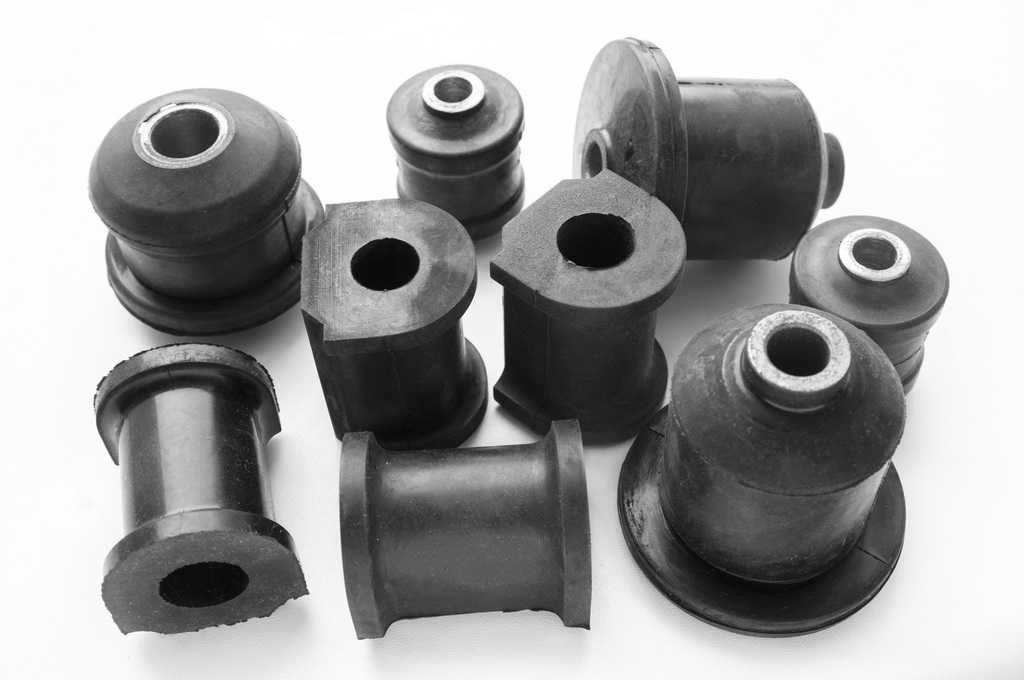Rubber bumpers are often overlooked but serve a critical role in many applications, from protecting machinery to reducing noise and absorbing shock. Understanding their use in detail can help you choose the right bumper for your needs.
Rubber bumpers are designed to prevent damage by absorbing impact, reduce vibration, and minimize noise. They are essential components in a wide range of industries, ensuring smooth operation and longevity of products.

Rubber bumpers offer more than just surface protection. By digging deeper into their design and materials, we can better understand how they provide these benefits and where they are most effectively used.
What Is a Rubber Bumper?
A rubber bumper is a protective component made of rubber or elastomeric materials, designed to absorb and dissipate impact forces. Typically, these bumpers are placed between two surfaces or objects that may come into contact with each other, providing a cushioning effect.
Rubber bumpers are used to prevent direct contact between these surfaces, which helps to reduce damage caused by vibrations, shocks, or direct impacts. They are often made from synthetic rubbers, such as Neoprene, EPDM, or Nitrile, which offer varying degrees of flexibility, chemical resistance, and durability.
Rubber bumpers are impact-dampening components that act as protective barriers between surfaces to minimize wear, reduce noise, and absorb energy from impacts.
What Are the Benefits of Rubber Bumpers?
Rubber bumpers provide several key advantages that make them indispensable in protecting equipment and improving operational efficiency:
Impact Absorption
The primary function of rubber bumpers is to absorb the energy produced during impact. The rubber material deforms upon impact, dissipating the force and reducing the likelihood of damage to the contacting surfaces. This feature is especially important in applications where delicate components are involved, such as electronics or medical devices.Vibration Damping
Rubber bumpers help in reducing vibrations that occur when machinery or equipment is in operation. These vibrations can lead to wear and tear over time, affecting both the equipment and surrounding surfaces. By dampening the vibrations, rubber bumpers extend the service life of the equipment.Noise Reduction
Rubber bumpers act as sound dampeners by absorbing sound waves and preventing them from transmitting through the surface. This is particularly important in noisy environments, such as factories or offices, where excessive noise can be detrimental to both the product and the people working nearby.Corrosion and Chemical Resistance
Certain types of rubber, like EPDM and Nitrile, offer resistance to oils, chemicals, and weathering. This makes them ideal for use in industries like automotive, food processing, and chemical manufacturing, where exposure to harsh environments is common.Customization
Rubber bumpers can be custom-molded into various shapes and sizes to fit specific requirements. Whether you need a cylindrical, square, or custom-shaped bumper, rubber's moldability ensures that it can fit any application perfectly.
The benefits of rubber bumpers include effective impact absorption1, vibration damping2, noise reduction3, and resistance to corrosion and chemicals. They offer a versatile solution for various industries.
What Are the Applications of Rubber Bumpers?
Rubber bumpers have a wide range of applications across multiple industries. Their versatility and protective capabilities make them an essential part of modern machinery, vehicles, and everyday products. Below are some of the most common applications:
1. Automotive Industry
In automotive manufacturing, rubber bumpers are used extensively in both exterior and interior applications. They are placed on the bumpers, door stops, and body panels to reduce damage from minor collisions and to cushion the force during impacts. Rubber bumpers on doors also prevent noise and vibrations, providing a smoother experience for passengers.
2. Industrial and Machinery Applications
In industrial settings, rubber bumpers are crucial for protecting machinery and equipment from external impacts. They are commonly found on factory floors, where they prevent machines from sustaining damage during operation. Rubber bumpers are often used in conveyor systems to reduce noise and ensure smooth movement of goods. Additionally, machinery used in heavy-duty applications, such as crushers and press machines, benefits from the shock-absorbing nature of rubber bumpers.
3. Furniture and Household Items
Rubber bumpers are commonly used in household furniture such as tables, chairs, and cabinets to prevent scratches and damage to walls and floors. When applied to furniture legs, they prevent sliding and reduce the risk of floor damage. Rubber bumpers are also used in appliances like refrigerators and dishwashers to reduce noise during operation.
4. Electronics and Sensitive Equipment
For delicate equipment, such as medical devices, consumer electronics, and sensors, rubber bumpers provide critical protection. They absorb impacts that could otherwise damage sensitive components, ensuring longer product life and reliability. In electronics, bumpers often cushion the impact during transport, reducing the likelihood of damage from drops or bumps.
5. Doors and Windows
In door and window applications, rubber bumpers serve as buffers to prevent damage to the frame or the wall. Rubber bumpers are often installed on door stoppers to reduce noise and prevent damage to the door frame during use. They also serve to cushion the impact of closing doors, especially in high-traffic areas.
6. Medical Equipment
In the medical field, rubber bumpers protect delicate equipment, such as diagnostic machines and hospital beds, from impacts. They ensure that the equipment operates smoothly, preventing damage from external shocks. Additionally, in environments like hospitals, rubber bumpers also help reduce noise and vibrations, contributing to a quieter environment.
Rubber bumpers have applications in automotive, industrial machinery, furniture, electronics, medical equipment, and door/window systems, providing essential protection and improving durability.
Material Selection and Design Considerations
The design and material choice for rubber bumpers are crucial to their performance. Different rubber compounds offer distinct benefits, depending on the specific demands of an application. Below are some common types of rubber used in bumpers:
| Rubber Type | Key Features | Best Use Cases |
|---|---|---|
| EPDM (Ethylene Propylene Diene Monomer) | Highly weather-resistant, UV stable, and ozone resistant | Outdoor applications, automotive, construction equipment |
| Nitrile Rubber (NBR) | Excellent oil and fuel resistance | Automotive, industrial machinery, oil-exposed environments |
| Neoprene Rubber | Good chemical resistance, durable | Industrial, light chemical exposure, moderate temperature conditions |
| Silicone Rubber | High-temperature resistance, flexible | Medical equipment, high-heat industrial environments |
Choosing the right rubber material depends on factors such as exposure to weather, chemicals, temperature, and the level of shock absorption required.
Each rubber material has distinct features that make it more suited for specific applications. Understanding these materials can help in making the right choice.
Conclusion
Rubber bumpers are a key component in protecting products, reducing noise, and ensuring smooth operation across various industries. Their design flexibility, material options, and performance benefits make them an essential tool for a wide range of applications, from automotive and machinery to electronics and medical devices.
Understanding impact absorption can help you choose the right rubber bumper for your specific needs, ensuring optimal protection and performance. ↩
Exploring vibration damping will reveal how rubber bumpers enhance equipment longevity and operational efficiency, making them essential in various industries. ↩
Discover how rubber bumpers contribute to a quieter environment, which is crucial for both productivity and comfort in workplaces and homes. ↩







